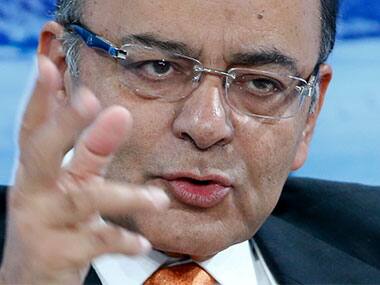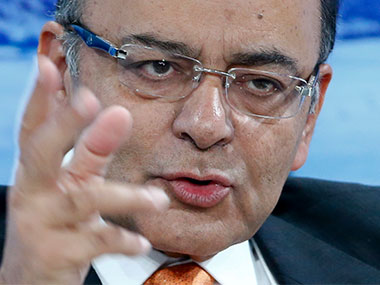The other side of policy success is often financial hazard. The successful holding of two auctions – for allocating coal mines, and the ongoing one for the reallocation of telecom spectrum, which have collectively drawn bids worth more than Rs 3 lakh crore - brings with it a big danger: that some of the bidders may have bid unwisely, and could, at some point in the future, face business failure. Finance Minister Arun Jaitley has a paradoxical problem on his hands: the same policy that will fatten the public purse has the ability to flatten it if the high prices paid at auctions end up ruining the balance-sheets of banks, forcing him to recapitalise them at public expense. The “winner’s curse”, where successful bidders find that they may have paid too much for an asset they cannot monetise adequately to keep their heads above water, has consequences that go beyond just the company involved: they impact banks, who may have lent them the money, and also overall economic efficiency in a market economy. [caption id=“attachment_2153991” align=“alignleft” width=“380”]  Finance Minister Arun Jaitley[/caption] The problem is not that bidders may have paid too much, but the mechanism to put them out of business quickly is too weak to handle the consequences of bad business decisions. When business failure takes too long to resolve, and when banks are unable to recover their dues due to dilatory procedures and unnecessary court indulgence, the business environment itself deteriorates as new, genuine promoters wonder if they should take the risk in such an environment. As Omkar Goswami, author of ‘Corporate Bankruptcy in India: a comparative perspective’, wrote in The Indian Express yesterday (16 March), “barriers to prompt and efficient exit are nothing other than barriers to entry. No country with tedious, never-ending bankruptcy processes can expect to get significant direct investments, be these from local entrepreneurs or foreign shores. Where I can’t exit, I shan’t enter.” But it is not just about promoters. Banks are increasingly cagey about lending to bidders in the spectrum auctions. The Economic Times today quotes SBI Chairman Arundhati Bhattacharya, as saying that she will be extremely choosy about lending to telecom. Who gets her money will depend on how much the companies are already in hock. While Idea (backed by the Birlas), Vodafone, and Bharti (the market leader), should have no problems getting money from banks, the same cannot be said about some of the others. What SBI says will be true for most other public sector banks, which are reeling under over Rs 3,00,000 crore of bad loans. Without capital, there is little chance of any of them being willing to lend large amounts of money to coal miners or telcos. So what we need pronto – as of yesterday – is a quick and efficient bankruptcy code for failing businesses: an exit policy for management, so to speak. India does have a bankruptcy code called the Sick Industrial Companies Act (SICA), but the procedures prescribed by this Act are making industries sicker than before, not healthier. The Act is used to delay recovery or euthanasia – and hence needs to be consigned to the dust-bin. Even laws specifically intended to help banks recover dues are being blunted by court decisions. For example, the Recovery of Debts Due to Banks and Financial Institutions Act, 1993 (RDDB), is an effective washout, thanks to courts that seem to think that the first priority for banks should be revival, not closure. Courts also tend to favour so-called “weaker” sections like farmers or workers, which makes a bankruptcy code even more urgent. In two recent cases, the courts almost drove the last two nails in the coffins of existing bankruptcy laws. In a case involving Arihant Threads Ltd (read the full judgment here), the apex court held that SICA would take precedence over RDDB, which means reviving a company that may (or may not) be in terminal decline will be given priority over the right of banks to recover their dues by selling the collateral pledged with them. The case, relating to the mid-1990s, was decided only in 2014. The existing bankruptcy code is clearly a bankrupt idea. Another case, also decided by the Supreme Court, involved denying a bank effective rights over collateral. The case was simple: the SBI lent money to sugar mills in Uttar Pradesh against the collateral of sugar stocks. But some of these sugar mills apparently had not paid growers their dues for cane due to low sugar prices. When a growers’ association, the Rashtriya Kisan Mazdoor, moved the Allahabad High Court, the latter quashed the banks’ right to their collateral and asked collectors to sell the stocks and pay growers first. Seeing its Rs 3,000 crore loans to sugar mills turning rapidly go up in smoke (or into bad loans), SBI went to the Supreme Court, where it got only this pious statement. “In view of the suicides among farmers, let us put a quietus to this,” The Times of India quoted the bench as observing, before dismissing SBI’s appeal. Even without the courts doing the damage, the fact is cases drag on endlessly, making a mockery of the very idea of debt recovery. For example, Vijay Mallya’s Kingfisher Airlines owes banks more than Rs 7,000 crore, but despite going bankrupt years ago, a very small portion of the money has been recovered. India’s banks had over Rs 3 lakh crore of bad loans as at the end of December 2014. A lot of it could have been recovered by now if we had had a proper bankruptcy code, since many of the loans were given against asset pledges or collateral like land, shares or factories and buildings. The USA has a bankruptcy code called Chapter 11 under which companies which can’t pay their lenders can seek temporary shelter under the provisions of the chapter. During this period of temporary relief, lenders and management can renegotiate their loans – usually a part of the loans will be written off, while the company will sell some of its assets to stay healthy. This way, in just a few months, a decision is taken on whether the company can be revived or will have to be closed. Arun Jaitley made a reference to the need for a bankruptcy code in his budget speech. It should have been one of the first pieces of legislation the NDA government should have grappled with. It could even have been sold as an anti-crony law, with provisions to help rehabilitate labour included in it. This law is vital as we stare at the success of two major auctions of natural resources. Some of the winners of coal blocks and spectrum may not succeed. The government has to quickly enact a new bankruptcy code to ensure that even though some fail, they money lent is not locked up endlessly in court cases. The main elements of the law should be the following: One, anyone, from the company itself to its lenders, should be able to trigger a statement of impending bankruptcy. The law can specify the circumstances in which this declaration can be made. Individuals should also be allowed to declare themselves bankrupt. Two, once an entity is declared a potential bankrupt, there should be a small window – say, three months – during which the lenders and the company (or individual) should negotiate what part of the loan will be written off, and what part will be repaid on what terms, and whether the company can be revived. Three, certain assets – like workers’ dues, an individual’s provident fund, etc – should be completely out of reach of lenders. There should also be provisions to pay workers, say, six months’ wages, financed by an unemployment tax that could be 0.10 percent of a company’s annual wage bill. Four, if no agreement is reached between lenders and company, the company should be closed and a liquidator appointed to auction the assets and repay bankers whatever is left. A country without an effective bankruptcy law will end up creating zombie banks and a walking wounded corporate sector.
The coal and spectrum auctions are good for the exchequer, but if banks have to lend to bidders and some of them go bust, the problem will blow up in Arun Jaitley’s face as banks begin to face bankruptcy
Advertisement
End of Article
Written by R Jagannathan
R Jagannathan is the Editor-in-Chief of Firstpost. see more


)

)
)
)
)
)
)
)
)



